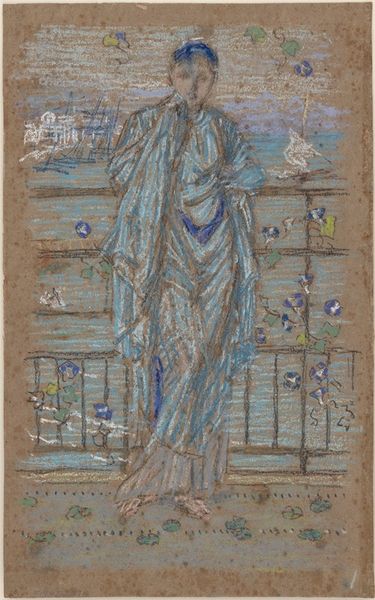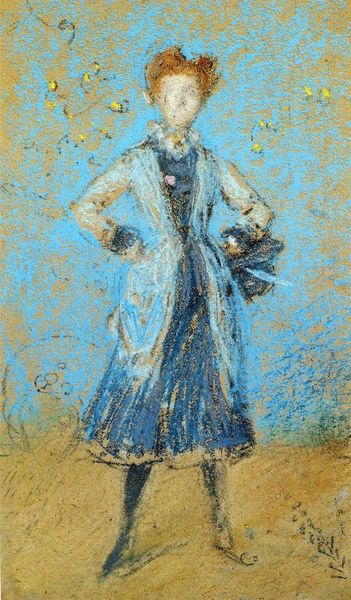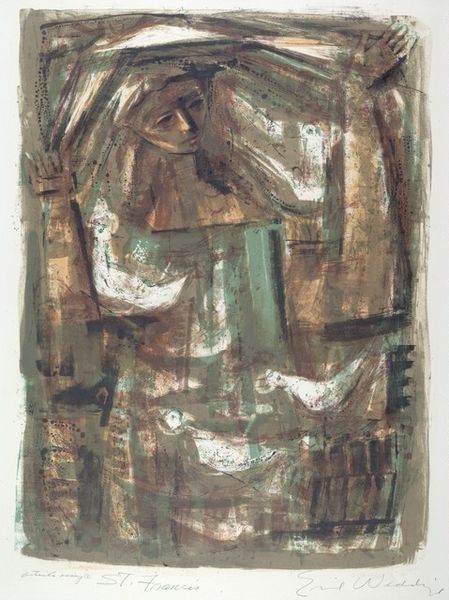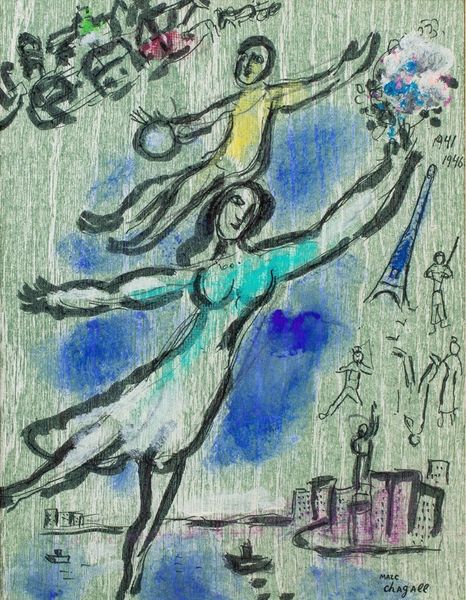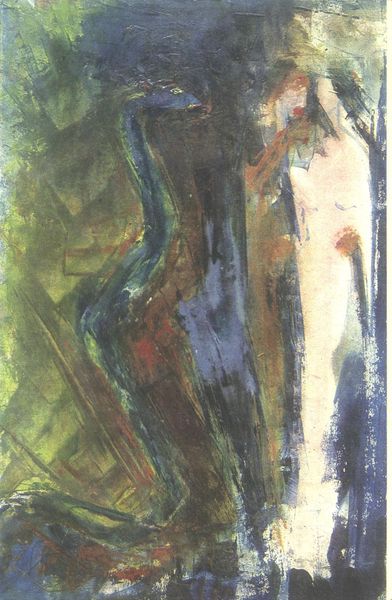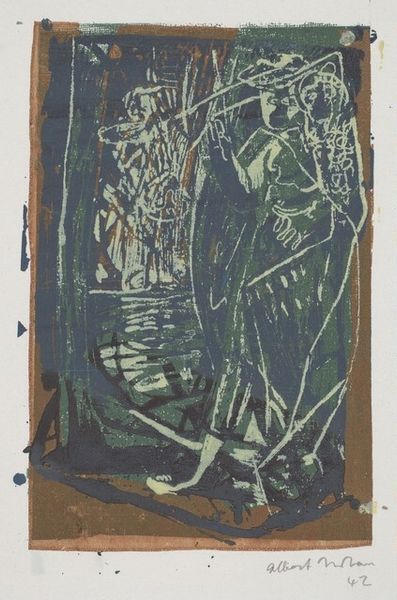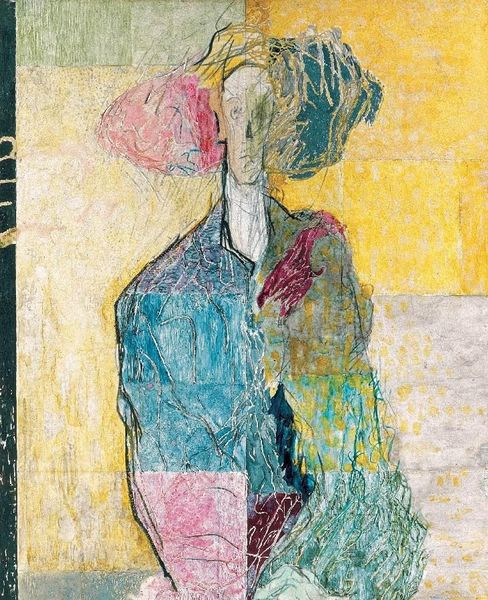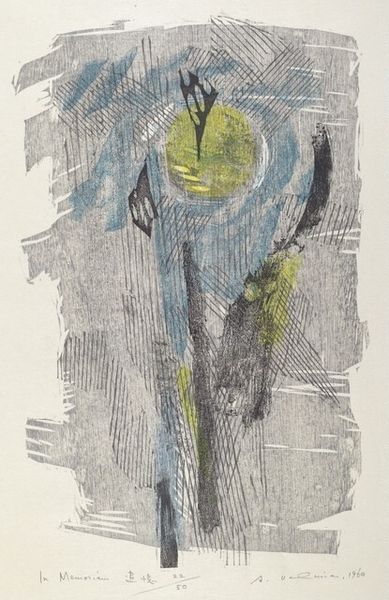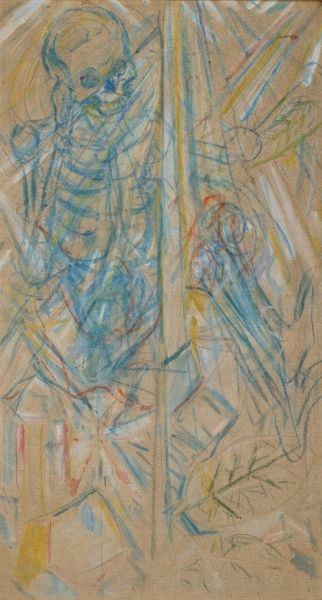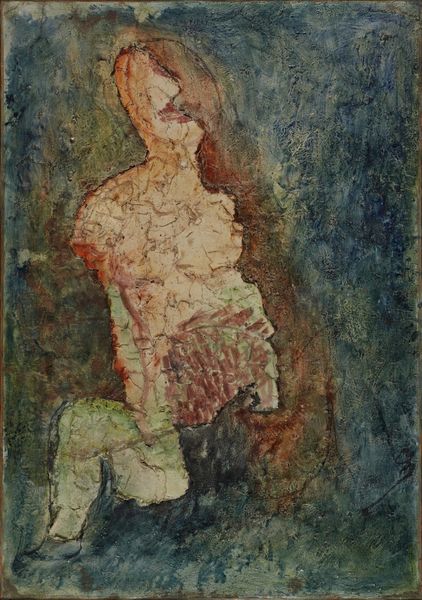
Dimensions: 26.04 x 16.19 cm
Copyright: Public domain
Editor: Here we have Whistler’s "Morning Glories," created around 1869, using watercolor, pastel and pencil. The woman swathed in robes almost blends into the seascape behind her. What catches your eye when you look at it? Curator: It's more than just aesthetic beauty; it’s a window into the complex societal expectations placed on women. Note how her clothing almost camouflages her into the scene, visually silencing her identity, wouldn't you agree? Editor: I hadn’t thought about it like that; I was focused on how soft and dreamy it all feels. Curator: Whistler often portrayed women in his works, frequently exploring their constrained roles. This almost ethereal rendering serves to further diminish her presence, while the pastel medium hints at fragility, symbolizing societal pressures of maintaining perfect femininity. Editor: The morning glories wrapping around the railing; are they symbolic, too? Curator: Precisely! Flowers were commonly used in art to signify fertility or to imply fleeting beauty, furthering the complexity around gender, life, and womanhood. Even her gaze feels… absent. Considering the time period, can you see that the absence suggests the limitations and internal suppression experienced by many women during that era? Editor: It’s strange how an image that initially seemed pretty can become so loaded with meaning once we start thinking about those contexts. Curator: And how relevant are those pressures, still echoed in society today? Analyzing art this way bridges historical and current gender and societal debates. It encourages an empathetic approach toward art’s sociopolitical narratives. Editor: I definitely see the value in approaching art with that critical, historical awareness. Thank you; I’ve learned a lot.
Comments
No comments
Be the first to comment and join the conversation on the ultimate creative platform.
